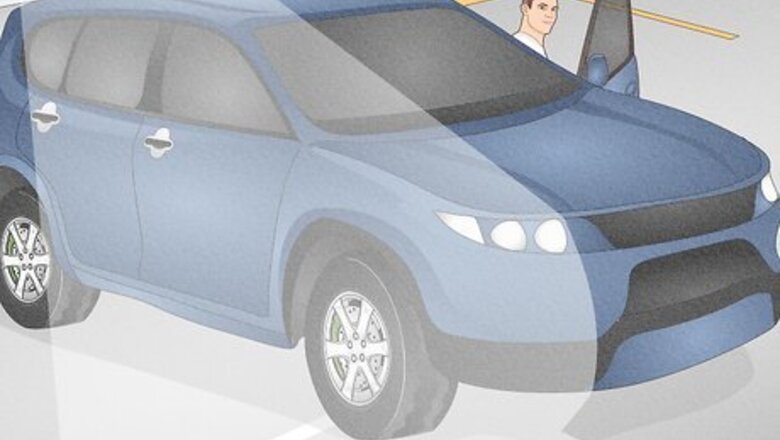
views
- Locate the DOT code on the sidewall of your tire. The code consists of the letters "DOT" followed by up to 13 numbers and letters.
- Read the last 4 digits of the DOT code. The first 2 numbers tell you the week of the year the tire was made, and the last 2 numbers indicate the year.
- Replace your tires when they’re 6 years old, regardless of their condition.
Park in a safe, well-lit place.
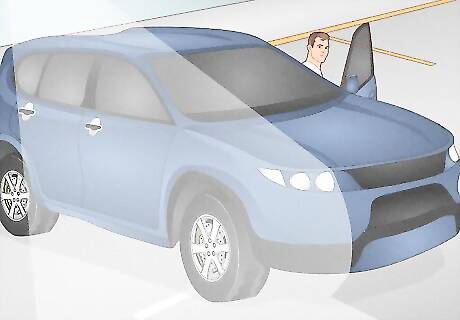
Park outside or grab a flashlight to help you see the tires clearly. If you’re parked on the street, examine your tires from the curb side so you’re safe from traffic. You’ll probably need to crouch down or kneel to read your tires, so try to find a dry, clean spot. Wear gloves in case you need to brush away any mud or debris from the tires so you can read them.
Locate your tire’s DOT code.

Check the sidewall for “DOT” followed by up to 13 letters and numbers. A tire’s sidewall is the smooth part of the tire outside the rim before the tread starts. Check both sides of the tire if you see an incomplete code on the outside—the full code is legally required to be printed onto one sidewall in the US, but there may only be a partial code printed on the other. DOT stands for Department of Transportation and the code provides information about when and where the tire was made and its size. The DOT code is sometimes called a Tire Identification Number (TIN).
Read the last 4 digits of the DOT code (post-2000).
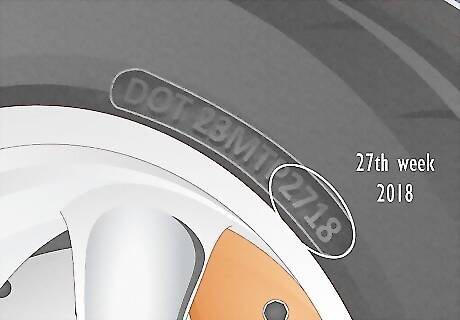
Look for 4 numbers ending with 2 digits that look like a past year. The first 2 numbers tell you the week the tires were manufactured, and the last 2 tell you the year. If you see 2718, for example, that means the tire was made in the 27th week of 2018. This 4-digit marking at the end of the DOT code applies to tires manufactured in or after the year 2000. Read the full code to learn where your tire was manufactured, what its top recommended speed is, and more.
Look at the last 3 digits of the DOT code (pre-2000).
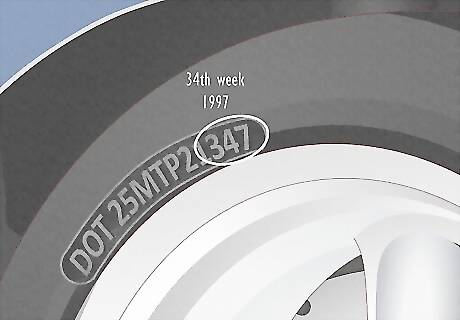
Look for 3 digits at the end of the DOT code if your tires are very old. Like newer codes, the first 2 numbers tell you the week of the year the tires were made. The third number tells you the year, but doesn’t specify the decade since it was assumed the tires would be replaced within 10 years. For example, if you see 347, that means the tires were made in the 34th week of a year ending in 7, like 1997, 1987, or 1977. In the 90s, some tire manufacturers included a triangle after the DOT code to indicate that the manufacturing year was during the 1990s. It’s very rare to come across tires made before 2000.
See if your tires are still under warranty.
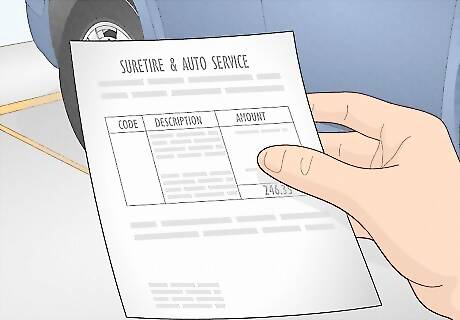
Check your sales receipt for the purchase date and warranty details. Most major manufacturers offer warranties lasting 4 to 6 years per tire from the date of purchase. If your tire fails under warranty, present your sales receipt with your car’s odometer reading at the time of purchase, plus any additional warranty paperwork to make a claim. If you lost your receipt, the tire is likely under warranty for 5 years from the week of manufacture indicated on the DOT code. Contact the manufacturer for warranty details and to learn how to file a claim without a receipt. For example, if you got new tires that were 1 year old, your warranty would cover them for 6 years. Without your receipt, you’d get 4 years of coverage since they’re already 1 year old.
Get new tires when yours are 6 years old.
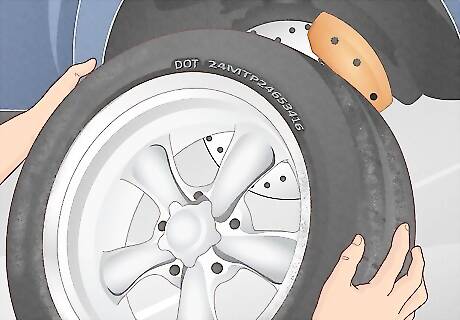
Replace the tires regardless of their condition for maximum safety. Plan to start shopping a few weeks or months earlier so you have time to replace them before they become unsafe. Even if they have plenty of tread left, the rubber on old tires can dry and crack, leading to flats or blowouts. Replace your tires sooner if the tread wears down too far or there is other damage. Check on your spare tires, too. Even if you haven’t used one, replace any spare tires that are 6-10 years old.
Replace worn-out tires even if they're not 6 years old.
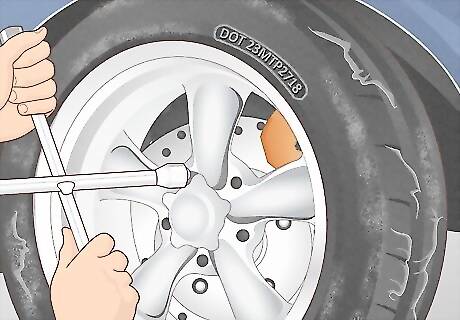
Get rid of tires if you see signs of dry rot or tread wear. Dry rot happens when tires become dry and brittle. If you see dry rot signs like separated treads, cracks in the sidewall, or stiff rubber, replace the tire immediately to avoid a blowout on the road. Measure the tread of your tires monthly, too. If the tread is 1/16 inch (1.59 mm) deep or less, the tires are considered unsafe to drive on. To test the tread quickly, insert a penny head-down into your tire’s tread. If the tire is even with the top of Abraham Lincoln’s head, the tread is too worn down and the tires are unsafe.
Dispose of your tires when you get new ones.

Ask if your tire retailer can take and recycle your old tires for you. Most of the time, they will take the old tires and casings when they install your new set. There might be a small fee to cover the cost of taking the tires to the dump if they can’t be recycled. Tires can be burned for fuel or recycled into things like rubberized asphalt or even playground equipment.




















Comments
0 comment